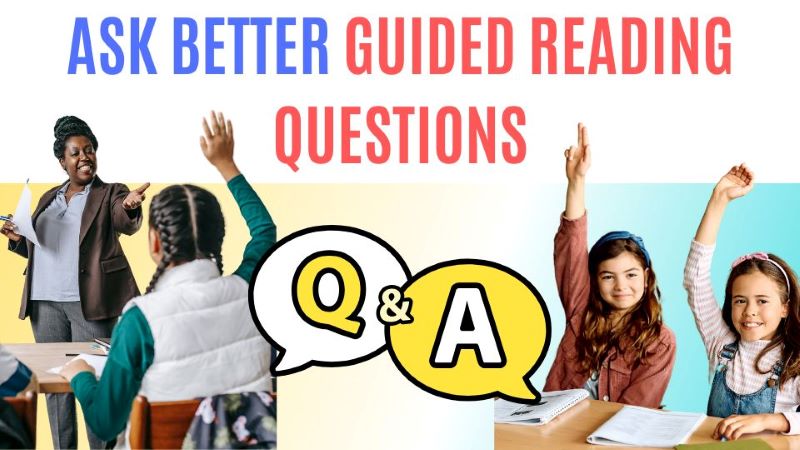Guided reading is one of the most popular lesson formats for English teachers, helping students not only improve their reading abilities but also develop critical thinking and language skills. But crafting the right questions to spark curiosity and deep discussion can be a bit tricky! The right questions can transform a simple reading session into an engaging, thought-provoking experience that drives learning forward.

Let’s explore how to craft high-quality guided reading questions that will stretch your students to explore stories in depth while developing their English language skills. Plus, we’ll introduce you to Abridge Academy’s new guided reading teaching materials – designed to provide you with everything you need for more interactive and engaging online ESL classes themed around stories!
Why are questions important for guided reading?
Guided reading lessons typically focus on a story or non-fiction text. However, rather than just passively reading, instead students are challenged with deeper questions and follow-up activities to further develop their language skills.
Simple questions focusing on comprehension of the text can help check understanding and boost confidence. Additionally, you can use high quality questions to guide students to infer the meaning of new words or grammatical structures in the text. Finally, more advanced questions help stretch students to analyse beyond the story, for example considering character motivations or predicting what might happen next.
High quality questions also help boost students enjoyment and engagement in reading. Teachers can link the story to wider societal contexts or students’ own lives, as well as to other school subject areas or interests. This helps encourage active participation and foster a love for reading outside the classroom too.
How can you improve the quality of questions during class?
Here are some quick tips to help improve your guided reading questions:
- Use open-ended questions: Encourage deeper thinking and discussion by avoiding yes/no questions. For example, instead of asking “Did the character feel happy?” ask “How did the character feel?”
- Vary question types: Mix up comprehension, inferential, and opinion-based questions to keep students engaged and develop a wider range of skills.
- Focus on key themes: Tailor questions to the themes and big ideas in the text, helping students make connections to the broader lesson objectives.
- Be clear and concise: Make sure questions are easy to understand, especially for ESL learners. Avoid overly complex phrasing that may confuse them. For example, rather than “Do you think he could have done something different?” ask “What could he have done differently?”
- Encourage student-led inquiry: Allow students to come up with their own questions about the story, which promotes ownership of their learning. This is particularly effective in group class activities.
What questions can you ask during guided reading?
Let’s click through the slides to explore the different types of questions you could ask in more depth:
Asking a variety of high quality questions across these four question types is key to stretching students’ learning in guided reading lessons, fostering a deeper understanding and developing their language skills.
Start teaching your best online guided reading lessons today!
Do your students love reading cute stories and having fun in class, but you’re struggling to find suitable books for their level or link stories to measurable learning outcomes? Maybe you want to stretch their creativity a bit, helping them tell their own stories?
Take the stress out of finding high quality guided reading materials adapted for ESL students with Abridge Academy’s pre-made guided reading lessons! Our ever-expanding library includes everything you need to teach engaging, fun and interactive online ESL classes, including:
📚 Levelled reading lessons based around traditional fairy tales and fables.
📝 Creative and narrative writing lessons to develop storytelling skills.
🎁 100s of printable worksheets, flashcards, certificates and creative projects.
Designed specifically for ESL students, these lessons are fun and engaging, link directly to language learning objectives, and are packed full of interactive activities! They can be used as stand-alone lessons, added in to supplement your core curriculum lessons, or taught as a full guided reading or creative writing course. Get started for free today →
